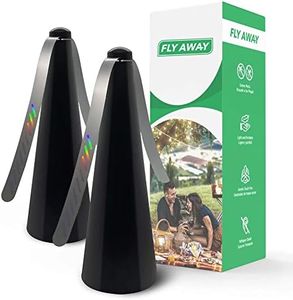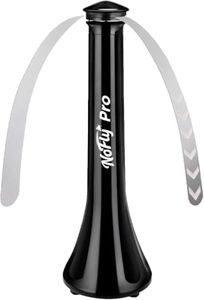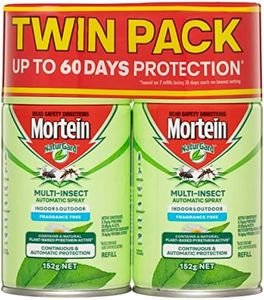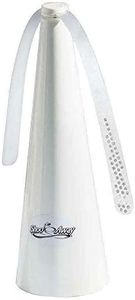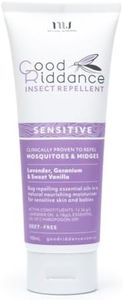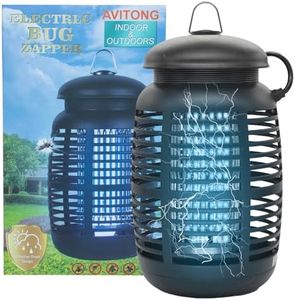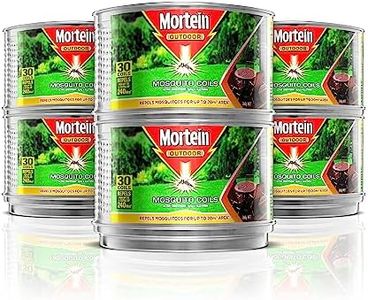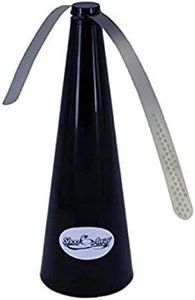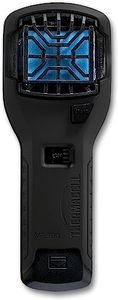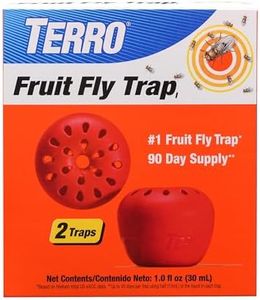We Use CookiesWe use cookies to enhance the security, performance,
functionality and for analytical and promotional activities. By continuing to browse this site you
are agreeing to our privacy policy
10 Best Fly Repellents
From leading brands and best sellers available on the web.Buying Guide for the Best Fly Repellents
Choosing the right fly repellent can greatly improve comfort and health, whether you're indoors at home or spending time outdoors. The effectiveness of a fly repellent depends on where and how you plan to use it, how long you need it to work, and any potential sensitivities you may have to certain ingredients. Understanding key features and how they relate to your needs will help you select the most appropriate product and avoid unnecessary frustration or ineffectiveness.Active IngredientThe active ingredient in a fly repellent determines how the product works against flies and its safety profile. Common active ingredients include DEET, picaridin, citronella oil, and permethrin for chemical-based products, while natural repellents may use plant oils like lemongrass, eucalyptus, or lavender. Chemical ingredients typically provide stronger and longer-lasting protection, but may cause sensitivities in some individuals or be unsuitable for young children or pets. Natural ingredients are gentler but may need to be reapplied more often. Consider your personal sensitivities, indoor versus outdoor use, and if you'll be using near food or animals when choosing the active ingredient.
Formulation TypeFly repellents are available in various forms, such as sprays, lotions, candles, coils, electronic devices, and even wearable bands. Sprays and lotions are applied directly to skin or clothing and offer portable, immediate protection, candles and coils create a fly-repellent area, while electronic devices and traps attract and kill flies in a designated space. To decide, think about the environment (open outdoor space, kitchen, picnic area, etc.), the number of people, and how easy it needs to be to reapply or refill. Sprays and lotions are best for personal use outdoors, while area treatments are suitable for patios or indoor protection.
Duration of EffectivenessDuration of effectiveness tells you how long the fly repellent will keep working after you apply or set it up. Some repellents last just a couple of hours and need frequent reapplication, while others (especially electronic or passive devices) can offer all-day coverage. For brief outdoor activities, a short-duration repellent might be sufficient, but for longer outdoor events or for protecting your indoor spaces over many hours, pick a repellent with a longer active period to minimize interruptions.
Safety and SensitivitySafety and sensitivity are important, especially if children, pets, or those with allergies are present. Some active ingredients or formulations are not suitable for young ones or animals. Always check the product label for safety guidance and consider hypoallergenic or natural alternatives if you have concerns. Think about where you'll be using it—inside your home, around food, or directly on kids—to make sure your choice fits all health and safety needs.
Coverage AreaCoverage area refers to how much space a repellent can effectively protect, whether it's a small area like your picnic blanket or a larger space like an entire patio or room. Personal products like sprays cover only what's treated directly, while devices, candles, and coils can handle larger or communal spaces. Evaluate where you need protection most—close to your body, in a whole room, or over a backyard—and select a repellent with appropriate coverage.
